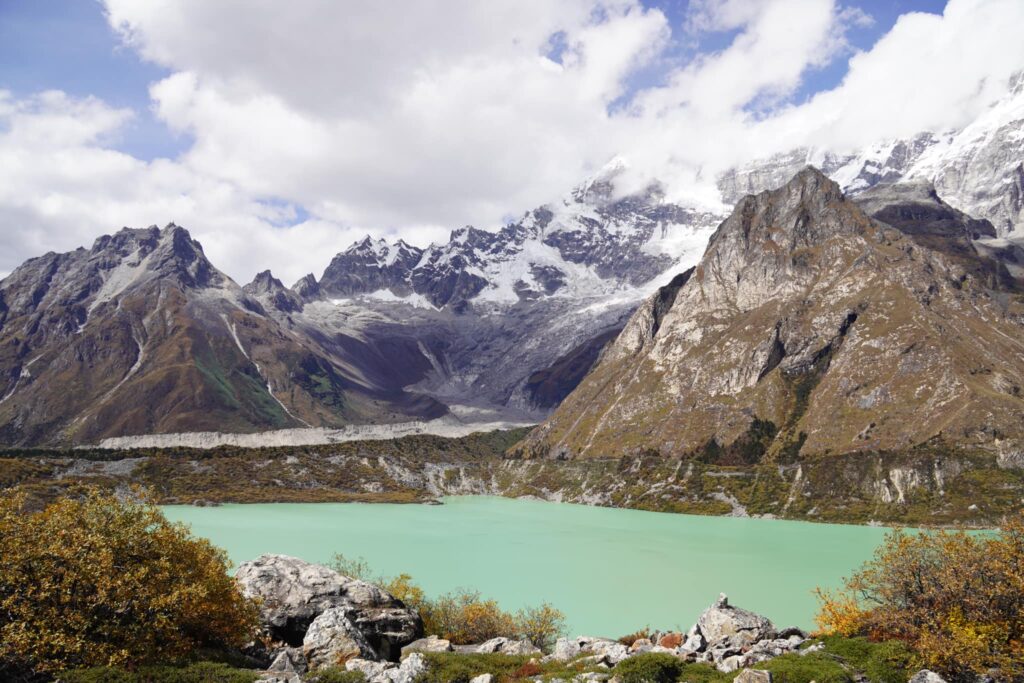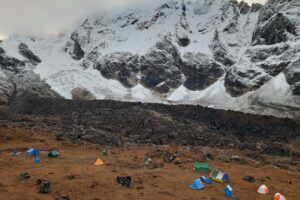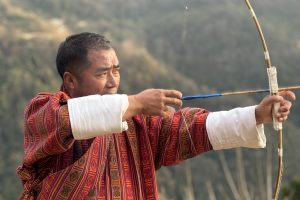
Lies between the highest mountain ranges of the world is Bhutan, the hidden gem of the Himalayas. The kingdom has been a hotspot for its spectacular and virgin nature, its unique culture and especially as the happiest country in the world.
Yet, these are the 7 things you probably have not heard about this beautiful country.
- Bhutan is where the highest unclimbed mountain, Gangkhar Puensum, calls home. It lies at the border between Tibet (China) and Bhutan. With an elevation of 7,570m (24,836 ft), Gangkhar Puensum is named the 40th highest peak in the world. The name Gangkhar Puensum means “White Peak of the Three Spiritual Brothers” in Bhutanese.
However, the Bhutanese government has prohibited any mountain climbing activity, as the high mountain is considered as the sacred land, the home of the mighty gods and spirits.
- You can make your own stamp in Bhutan. There is probably no souvenir that is cooler than this. The country is even known as the Land of Beautiful Stamps. It only takes a few steps to create your personalized stamps at the Bhutan National Post Office in Thimphu. The stamps can be made from steel, silk and sometimes vinyl, and with your photo on it, in less than 10 minutes. Imagine how surprise your family and friends will be when they receive a postcard all the way from Bhutan with your picture on the stamp!
- Bhutan is the only country in the world which does not have a traffic light in its capital, Thimphu. At major traffic intersections, there will be a policeman directing the traffic using flamboyant and white-gloved hand movements.
- It is the only carbon-negative country, with 71% of land covered by forest. The Constitution of Bhutan have amended to ensure that the percentage of the country’s total land covered by forest remains higher than 60%. Currently, 51.44% of the country is protected areas, with 5 National Parks, 4 Wildlife Sanctuaries, 1 Strict Nature Reserve, 1 Botanical Park and 8 Biological Corridors that connect all of them.
The afforestation is encouraged by the Bhutan government, they provide resources for communities who live in the preservation areas to manage the forests and live harmoniously with the environment. In 2016, as their new prince was born, the Bhutanese have planted 108,000 to celebrate this special occasion.
- As it is already famous as a trekker’s heaven, Bhutan also has one of the toughest and most challenging treks in the work – the Snowman trek. The trip starts from Paro and will end in either Bumthang or Trongsa. What makes it a tough challenge is the high altitudes of the Bhutanese Himalayas together with the steep assents on the way. The trek requires experience and good endurance from trekkers to pass the Lunana region and further onto Gangkhar Puensum. The journey takes about 25 days and more than once you will have to camp in altitudes above 5,000m and maybe also on snow. Because of its tough conditions, this trek is more recommended for professional and experienced trekkers. But the result is all worth it as trekkers will be rewarded with the breath-taking landscape of Bhutan along the way.
- Bhutanese do not have surnames, except for the royal lineages. Also, there are only about 50 personal names in Bhutan, which is quite limited. So the same name may appear over and over again. A Bhutanese name is not immediately given after birth but only after a few weeks by a lama or a well-known religious personage.
Most of the names can be given without distinction if it is for a boy or girl and will have some meanings or a religious connotation. A baby’s name can be different from their parents or from each other.
- There are myths that the Yeti lives between the Bhutan’s forests, on the high altitudes of the mountains. While there is no solid evidence to prove Yeti’s existence, numerous tales about the mysterious creature have been told by the locals. There have been records of footprints, larger than human’s but in a single line, and hair that identified as belongs to “no known or recorded species” by DNA test. The only witness of the Yeti are the yak herders in Bhutan.
In 1933, botanist Geogre Sherriff even confirmed the existence of the mythical ape-like creature. But also there are opinions that the intrigue may belong to the snow leopard, otherwise called “the ghost of the Himalayas”.



